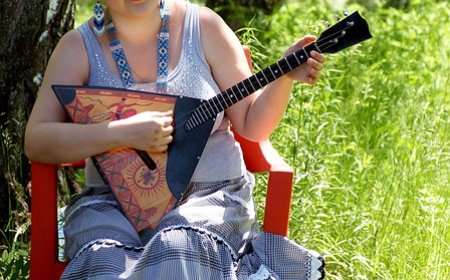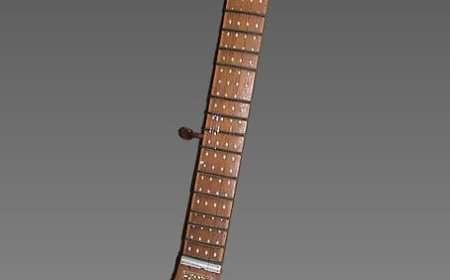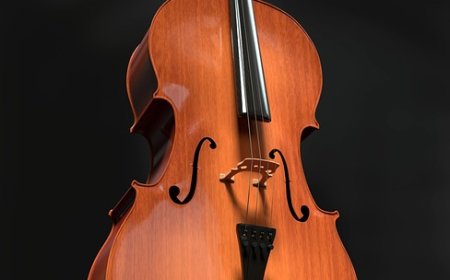English Horn Facts for Students | Learn How the English Horn Works & Its History
Learn all about the English horn—how it works, its history, parts, famous players, and more. A student-friendly guide to this expressive double-reed woodwind instrument.
🎼 All About the English Horn
🥇 Introduction
The English horn is a double reed woodwind instrument known for its warm, mellow, and sometimes sorrowful tone. It’s closely related to the oboe, but it’s longer, lower in pitch, and has a bulb-shaped bell. Even though it’s called a “horn,” the English horn is not a brass instrument—and it's not even English! It’s a favorite for beautiful solos in orchestras, especially when composers want to express deep emotions.
🎶 What Is an English Horn?
The English horn is a member of the oboe family and plays in the alto register, which means it sounds lower than the oboe but higher than the bassoon. Like the oboe, it uses a double reed, which the player blows through to make sound. The reed is attached to a curved metal tube called the bocal, which leads into the wooden body of the instrument.
The English horn is pitched in F, meaning it sounds a fifth lower than written. It has a similar shape and key system to the oboe, but it’s longer and ends with a pear-shaped bell that helps give it its soft, rich sound.
🧩 Parts of the English Horn
The English horn is made up of several parts that work together to produce its distinct tone:
- Double Reed – Two pieces of cane tied together and placed into the bocal. This is where the vibration starts.
- Bocal – A curved metal tube that connects the reed to the instrument and helps guide the air into the body.
- Upper Joint – The top section of the wooden body, played with the left hand.
- Lower Joint – The bottom section, played with the right hand.
- Bell – The flared end that is shaped like a teardrop or bulb, giving the English horn its unique voice.
Each part is carefully crafted, often from grenadilla wood, and the instrument has many keys and tone holes for playing a wide range of notes.
⚙️ How Does the English Horn Work?
The English horn works the same way as other double reed instruments. When the player blows air through the double reed, the two pieces of cane vibrate against each other. This vibration travels down the bocal and through the long wooden tube of the instrument.
By pressing keys and covering tone holes, the player changes how long the vibrating air column is, which changes the pitch. The longer body of the English horn means the notes sound lower and richer than the oboe’s.
Like the oboe, the English horn requires careful breath control, embouchure, and precise finger movements. It is often used for slow, lyrical solos in orchestral music because of its deep, singing tone.
📜 History of the English Horn
The English horn began its life in the 1700s as a type of alto oboe. It may have been developed in Eastern Europe or Germany, where it was originally called the cor anglais, which is French for “English horn.” Strangely, it is neither English nor a horn—the name was probably a misunderstanding of an old word for “angled horn.”
The instrument was used in classical orchestras during the Classical and Romantic periods. Composers like Haydn, Beethoven, and Berlioz wrote early parts for it. By the 1800s, the English horn became a regular part of the symphony orchestra and has stayed there ever since.
One of the most famous uses of the English horn is in Antonín Dvořák’s “New World Symphony”, where it plays a long, beautiful solo in the second movement.
🎷 Famous English Horn Players
While not as commonly known as oboists, these musicians have helped make the English horn shine:
- Thomas Stacy – Longtime English hornist of the New York Philharmonic, known for expressive solos
- Pedro Díaz – A respected performer and teacher of both oboe and English horn
- Louis Rosenblatt – Former English horn player for the Philadelphia Orchestra
- Christine Pendrill – Principal cor anglais (English horn) of the BBC Symphony Orchestra
- Albrecht Mayer – A famous oboist who also performs on English horn
These players have inspired many students and musicians to explore the beauty of this lesser-known instrument.
🎶 Learning to Play the English Horn
Most students don’t start with the English horn. Instead, they usually begin on the oboe, since it’s smaller and easier to handle. Once they’ve developed good tone, breath control, and finger technique, they may switch or add English horn as a second instrument—often in high school or college.
To play the English horn well, students need to develop a strong embouchure and learn how to make or adjust reeds, since the reed affects the tone a lot. They also need to become comfortable with transposition, because the English horn sounds a fifth lower than written.
Learning the English horn opens up opportunities for playing beautiful solos, performing in orchestras and wind ensembles, and exploring a unique voice in classical music.
😄 Fun Facts About the English Horn
- The English horn is not a horn and is not from England!
- It plays in the key of F, sounding a fifth lower than written.
- Its pear-shaped bell gives it a mellow, haunting tone.
- Many oboists also learn English horn as a second instrument.
- It’s often used in movie soundtracks to create sad or emotional moods.
- The English horn is also known as the “cor anglais” in many languages.
👧 Kid-Friendly Summary
The English horn looks like a bigger version of the oboe and makes a deep, warm sound. You blow into a special double reed, and press keys to play different notes. Even though it's called a "horn," it's really part of the woodwind family. It’s great for playing slow, pretty solos in band or orchestra. Many oboists play the English horn too—it’s like the oboe’s bigger cousin!
📚 Vocabulary Words
- English horn – A woodwind instrument in the oboe family with a low, mellow sound
- Double reed – Two thin pieces of cane that vibrate together to make sound
- Bocal – A curved metal tube that connects the reed to the instrument
- Cor anglais – The French name for English horn
- Transposition – Changing the pitch of written music to match how the instrument sounds
- Embouchure – The way your lips and mouth are shaped to play a wind instrument
- Bell – The flared end of a wind instrument where the sound comes out
- Grenadilla wood – A dense black wood used to make high-quality woodwind instruments
❓ Interactive Quiz
- What type of instrument is the English horn?
A. Brass
B. String
C. Woodwind
D. Percussion - What kind of reed does the English horn use?
A. Single reed
B. Plastic reed
C. Double reed
D. No reed - What is the English horn’s pitch compared to the oboe?
A. Higher
B. Lower
C. The same
D. Random - What shape is the English horn’s bell?
A. Straight
B. Round
C. Pear-shaped
D. Pointed - What is another name for the English horn?
A. Basset horn
B. Tenor oboe
C. Cor anglais
D. Contra-oboe




















































